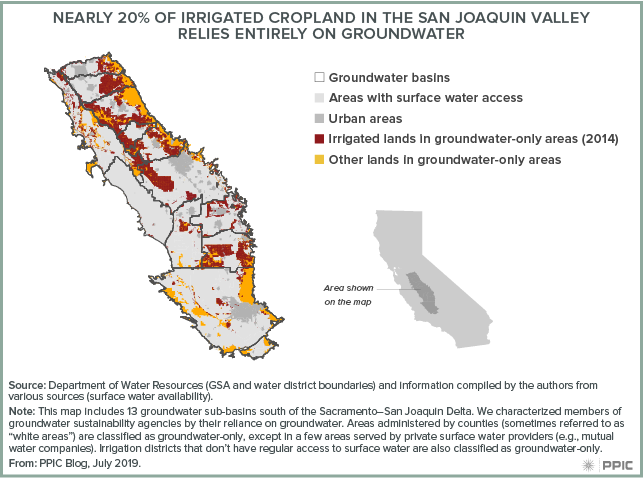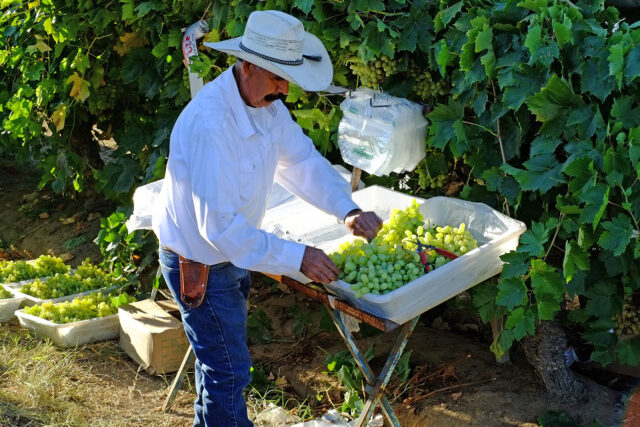The San Joaquin Valley—California’s largest agricultural region—has the largest groundwater deficit in the state. However, water scarcity is not experienced equally across the valley. Some areas receive abundant surface water to support cropland irrigation and drinking water supplies. Most others supplement their use with groundwater. Still others have no surface water access and depend entirely on groundwater. Water users in these groundwater-only areas are particularly vulnerable to pumping restrictions under the Sustainable Groundwater Management Act (SGMA)—the state-mandated effort to balance groundwater basins.
The map below gives a broad view of where the groundwater-only agricultural lands are located in the San Joaquin Valley. These areas are present in each basin; they include irrigated cropland (shown in red on the map) as well as rangeland and other open space (shown in gold).

We estimate that nearly 20%—or 840,000 acres—of irrigated cropland in the valley has no access to surface water. Crops are similar in groundwater-only lands and lands that have at least some access to surface water: more than half are planted with permanent fruit and nut crops. These crops provide higher revenues and employment than most annual crops. With groundwater cuts looming and no other water supply to fall back on, groundwater-only areas are on the front line of the effort to bring basins into balance. Inflexible approaches to managing this transition could result in unnecessarily large, undesirable reductions in high-value crop acreage, regional employment, and GDP.
Cooperative approaches to water management can give flexibility to groundwater-only areas and lessen the regional economic burden of reducing groundwater use. Facilitating local surface and groundwater trading would allow farmers who need more water for their orchards and other high-revenue crops to compensate other farmers for reducing their water use. Expanding surface water trading more broadly across the valley could bring down costs further and offer even more flexibility. And smart regional investments in new water supplies—particularly to capture more runoff from big storms and increase groundwater recharge—could offset some of the water use cutbacks expected in groundwater-only areas.
Cooperation will also be important to ensure adequate water supplies are available for the valley’s growing cities and small towns—most of which also rely heavily, if not entirely, on groundwater. Recharge partnerships that benefit communities are one promising way to do this.
Water conditions in San Joaquin Valley basins vary, from the size of a basin’s groundwater overdraft to the availability of surface water in the local supply mix. These variable conditions call for cooperation between those with access to surface water and those without. This will make it possible to lessen the costs of implementing sustainable groundwater management, a transition that will benefit the valley over the long run.





